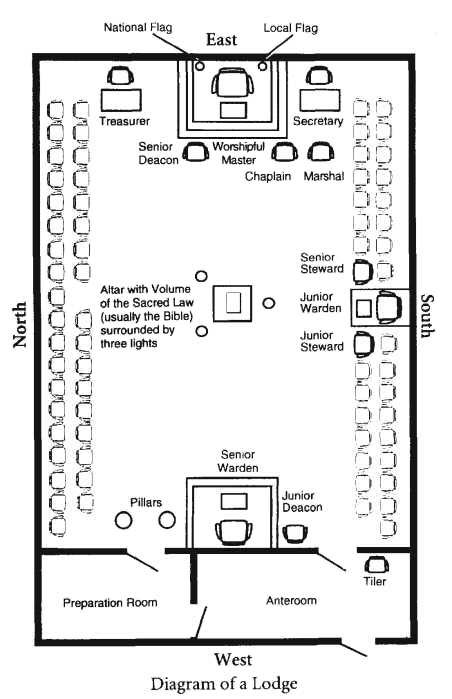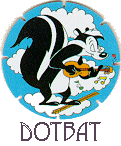“I think my grandfather was one, but I’m not sure what it means.”
“Yeah, my dad and uncle both used to go to Masonic meetings–I remember Uncle Fred coming by to pick him up. But I don’t know where they went or what they did. “
“I think they wear those funny hats.”
“I remember when I went away to college, my father showed me his ring and told me, if I ever needed help, I should look for a man with a ring like that and tell him I was the daughter of a Mason, but he never told me much about it.”
That’s not a surprising question. Even though Masons (Freemasons) are members of the largest and oldest fraternity in the world and even though almost everyone has a father or grandfather or uncle who was a Mason, many people aren’t quite certain just who Masons are. The answer is simple. A Mason (or Freemason) is a member of a fraternity known as Masonry (or Freemasonry). A fraternity is a group of men (just as a sorority is a group of women) who join together because:
- There are things they want to do in the world.
- There are things they want to do “inside their own minds.”
- They enjoy being together with men they like and respect.
What’s Masonry?
Masonry (or Freemasonry) is the oldest fraternity in the world. No one knows just how old it is because the actual origins have been lost in time. Probably, it arose from the guilds of stonemasons who built the castles and cathedrals of the Middle Ages. Possibly, they were influenced by the Knights Templar, a group of Christian warrior monks formed in 1118 to help protect pilgrims making trips to the Holy Land. In 1717, Masonry created a formal organization in England when the first Grand Lodge was formed. A Grand Lodge is the administrative body in charge of Masonry in some geographical area. In the United States, there is a Grand Lodge in each state and the District of Columbia. In Canada, there is a Grand Lodge in each province. Local organizations of Masons are called lodges. There are lodges in most towns, and large cities usually have several. There are about 13,200 lodges in the United States.
If Masonry started in Great Britain, how did it get to America? In a time when travel was by horseback and sailing ship, Masonry spread with amazing speed. By 1731, when Benjamin Franklin joined the fraternity, there were already several lodges in the Colonies, and Masonry spread rapidly as America expanded west. In addition to Franklin, many of the Founding Fathers men such as George Washington, Paul Revere, Joseph Warren and John Hancock–were Masons. Masons and Masonry played an important part in the Revolutionary War and an even more important part in the Constitutional Convention and the debates surrounding the ratification of the Bill of Rights. Many of those debates were held in Masonic lodges.
What’s a lodge?
The word “lodge” means both a group of Masons meeting in some place and the room or building in which they meet. Masonic buildings are also sometimes called “temples” because much of the symbolism Masonry uses to teach its lessons comes from the building of King Solomon’s Temple in the Holy Land. The term “lodge” itself comes from the structures which the stonemasons built against the sides of the cathedrals during construction. In winter, when building had to stop, they lived in these lodges and worked at carving stone.

While there is some variation in detail from state to state and country to country, lodge rooms today are set up similar to the diagram above.
Like many artisans today, stonemasons centuries ago wore leather aprons to carry their tools-and to protect themselves from flying chips of stone. This custom was adopted by the men who became Freemasons. Thus, modem Masons wear a lambskin or cloth apron, sometimes elaborately decorated or embroidered, to show their pride in being members of a fraternity with so long and great a history.
If you’ve ever watched C-SPAN’s coverage of the House of Commons in London, you’ll notice that the layout is about the same. Since Masonry came to America from England, we still use the English floor plan and English titles for the officers. The Worshipful Master of the Lodge sits in the East. ‘Worshipful” is an English term of respect which means the same thing as “Honorable.” He is called the Master of the lodge for the same reason that the leader of an orchestra is called the “Concert Master.” It’s simply an older term for “Leader.” In other organizations, he would be called “President.” The Senior and Junior Wardens are the First and Second Vice-Presidents. The Deacons are messengers, and the Stewards have charge of refreshments.
Courage is the first of human qualities, because it is the quality which guarantees all the others.
Bro. Winston Churchill
What goes on in a Lodge?
This is a good place to repeat what we said earlier about why men become Masons:
- There are things they want to do in the world.
- There are things they want to do “inside their own minds.”
- They enjoy being together with men they like and respect.
The Lodge is the center of these activities.
Masonry does things in the world.
Masonry teaches that each person has a responsibility to make things better in the world. Most individuals won’t be the ones to find a cure for cancer, or eliminate poverty, or help create world peace, but every man and woman and child can do something to help others and to make things a little better. Masonry is deeply involved with helping people-it spends more than $1.4 million dollars every day in the United States, just to make life a little easier. And the great majority of that help goes to people who are not Masons.
Some of these charities are vast projects, like the Shriners Hospitals for Children and Burns Institutes. Also, Scottish Rite Masons maintain a nationwide network of RiteCare Scottish Rite Childhood Language Programs. Each helps children afflicted by such conditions as aphasia, dyslexia, stuttering and related learning or speech disorders. The Grand Lodge of Florida supports The Masonic Medical Research Institute an internationally recognized biomedical research institute.
Some services are less noticeable, like helping a widow pay her electric bill or buying coats and shoes for disadvantaged children. And there’s just about anything you can think of in-between. But with projects large or small, the Masons of a lodge try to help make the world a better place. The lodge gives them a way to combine with others to do even more good.
Masonry does things “inside” the individual Mason.
“Grow or die” is a great law of all nature. Most people feel a need for continued growth as individuals. They feel they are not as honest or as charitable or as compassionate or as loving or as trusting or as well informed as they ought to be. Masonry reminds its members over and over again of the importance of these qualities and education. It lets men associate with other men of honor and integrity who believe that things like honesty, compassion, love, trust and knowledge are important. In some ways, Masonry is a support group for men who are trying to make the right decisions. It’s easier to practice these virtues when you know that those around you think they are important, too, and won’t laugh at you. That’s a major reason that Masons enjoy being together.
Masons enjoy each other’s company.
It’s good to spend time with people you can trust completely, and most Masons find that in their lodge. While much of lodge activity is spent in works of charity or in lessons in self-development, much is also spent in fellowship. Lodges have picnics, camping trips and many events for the whole family. Simply put, a lodge is a place to spend time with friends.
For members only, two basic kinds of meetings take place in a lodge. The most common is a simple business meeting. To open and close the meeting, there is a ceremony whose purpose is to remind us of the virtues by which we are supposed to live. Then there is a reading of the minutes; voting on petitions (applications of men who want to join the fraternity); planning for charitable functions, family events and other lodge activities; and sharing information about members (called “Brothers,” as in most fraternities) who are ill or have some sort of need. The other kind of meeting is one in which people join the fraternity one at which the “degrees” are performed.
But every lodge serves more than its own members. Frequently, there are meetings open to the public. Examples are Ladies’ Nights, “Brother Bring a Friend Nights,” public installations of officers, cornerstone laying ceremonies and other special meetings supporting community events and dealing with topics of local interest.
First published by The Masonic Information Center

